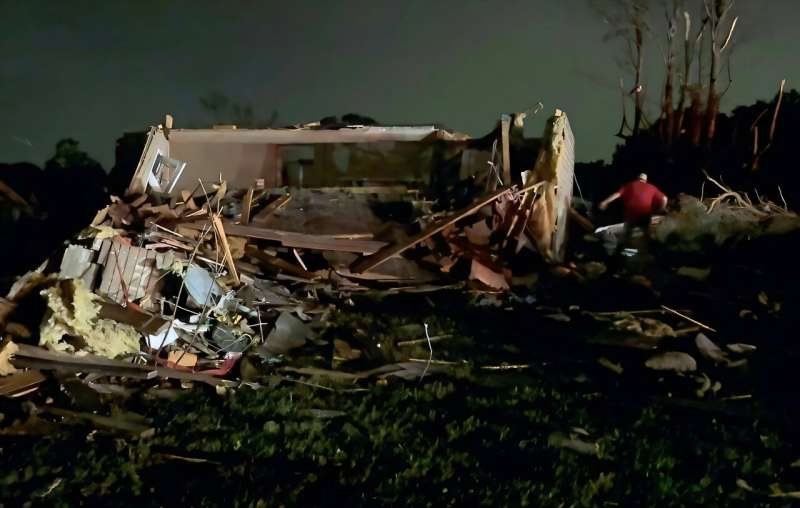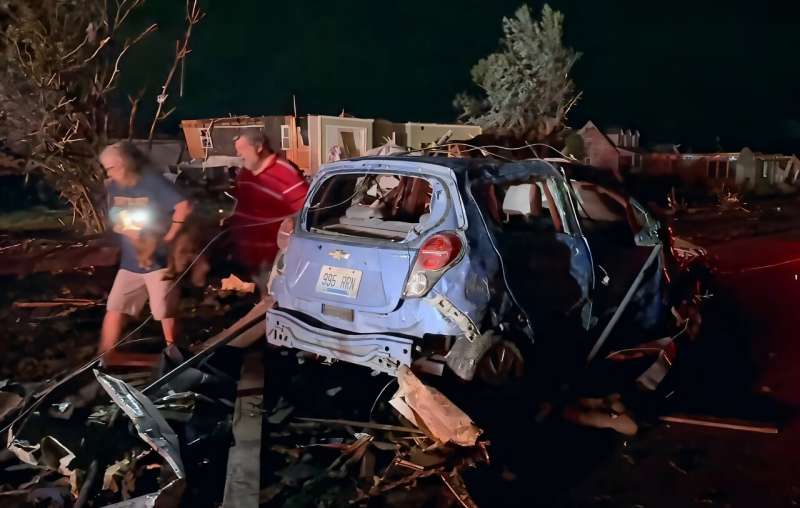Sure! Here’s a heartwarming retelling of the science story while maintaining a friendly tone:

In the heart of the Midwest, recent tornadoes swept across Missouri and Kentucky, leaving deeply felt impacts on communities and their residents. With resilience shining through the wreckage, the local spirit is inspiring, even amidst the chaos.
Over the weekend, Kentucky Governor Andy Beshear announced that 14 lives were lost in the storms, while Missouri saw another seven casualties. These tragic figures remind us of nature’s ferocity and the fragility of our lives.
Meet Jamie Burns, a devoted mother living with her husband and son in London, Kentucky. When the storm hit, their family took refuge in the basement of her sister’s sturdy brick home. Following the tempest, Jamie’s heart ached as she surveyed the destruction around her. “Things that have been here longer than me, things that have been around for over 30 years, are just flat,” she shared emotionally during a phone interview, her voice trembling. “It’s wild to see areas that are just completely gone.”
Indeed, drone footage captured the devastation: homes reduced to rubble, and tree trunks stripped bare, standing as silent witnesses to the storm’s wrath.
As of late Saturday, more than 100,000 residents were without electricity across Kentucky, leading five counties to declare a state of emergency. It’s important to note that Eastern Kentucky faces significant challenges; it’s historically known for being a coal mining region and struggles with poverty. “Many of us live in manufactured homes that aren’t safe for tornado weather,” Jamie pointed out, highlighting a pressing concern for safety.

Facing the Storm Together
While Kentucky bore the brunt of the storm’s fury, Missouri was not spared either. In St. Louis, five lives were tragically lost, and several neighborhoods experienced substantial damage. Reports indicated that essential services were disrupted, leaving over 80,000 individuals in the dark.
Mayor Cara Spencer described the tornado as potentially one of the worst storms in the city’s history. The devastation, she noted, was nothing short of heartbreaking. Over 5,000 buildings were damaged, and multiple injuries were reported, stirring immense concern within the community.
As residents band together, stories of community spirit emerge. Derrick Perkins, pastor at Centennial Christian Church, expressed his sorrow over the church’s damage. “Our hearts are broken,” he shared, yet he focused on hope: “Right now, we’re just praying for everyone who is still missing.” The solidarity between neighbors and friends offers a glimmer of hope amid the ruins.
While early warnings alerted communities about possible severe weather—Governor Beshear even declared a state of emergency ahead of time—the pressing question remains: Are we doing enough to prepare for such natural disasters? Recent staffing cuts within the National Weather Service have raised concerns about our readiness to face nature’s unpredictable fury.
Looking back, last year was noted for its alarming number of tornadoes—nearly 1,800 recorded, making it the second-highest on file according to NOAA. As lives are rebuilt and recovery begins, the stories of resilience remind us of the strength within communities, urging each of us to lend a helping hand in whatever way possible.
© 2025 AFP
If you would like to see similar science posts like this, click here & share this article with your friends!

